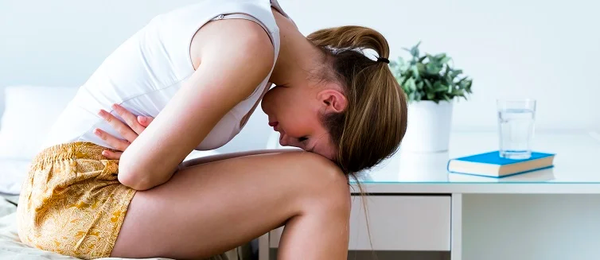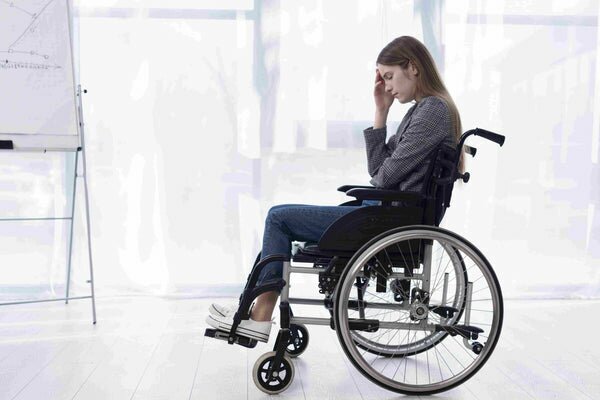Menstrual Health & Fibroids: Understanding the Connection

Fibroids are noncancerous benign smooth muscle growths in the uterus that can cause various symptoms, including abnormal bleeding, pelvic pain, and pressure on the bladder or rectum. Such growths are quite common, with up to 80% of women developing fibroids by the age of 50.
In this post, we are exploring the connection between menstrual health and fibroids, including their impact on menstrual health, symptoms, and treatment options.
Fibroids, also known as leiomyomas develop in the uterus. They are composed of muscle and fibrous tissue and can range from tiny to quite large. Fibroids can develop in different locations within the uterus, including the outer surface, the inner lining, and the wall of the uterus.
Menstrual health refers to the regularity, duration, and intensity of a woman's menstrual cycle. A healthy menstrual cycle occurs every 20 to 35 days, lasts 2 to 7 days, and involves moderate bleeding. However, many women experience menstrual problems, such as heavy bleeding or painful periods.
So, understanding the connection between menstrual health and fibroids is important because fibroids can significantly impact a woman's menstrual cycle and overall reproductive health in the longest run.
Common Symptoms of Fibroids
Fibroids will often cause a variety of serious health symptoms, including:
Pelvic pain
Fibroids can cause pain or discomfort in the pelvis or lower back. This can be a dull ache or a sharp pain that interferes with daily activities.’
Painful Sex
Fibroids can cause pain during sex, also known as dyspareunia. This is because fibroids can cause pressure and discomfort in the pelvic area, making sexual activity uncomfortable or painful. Additionally, fibroids can cause vaginal dryness, which can also contribute to pain during sex.
Constipation
Although it's not a common symptom, but fibroids can grow in different locations within the uterus, and those that grow in the posterior part of the uterus can push against the rectum, causing constipation.
Pressure on the Bladder and Rectum

Women with fibroids can experience pressure on the bladder and rectum due to the size and location of the fibroids. As fibroids grow, they can press against nearby organs, causing discomfort and pain.
The pressure on the bladder can cause frequent urination, a sudden urge to urinate, and difficulty emptying the bladder. The pressure on the rectum can cause constipation, pain during bowel movements, and a feeling of incomplete emptying.
Infertility
Fibroids can interfere with fertility by preventing the implantation of a fertilized egg or interfering with the blood supply to the uterus. However, many women with fibroids are able to conceive and carry a pregnancy to term.
Miscarriage
Fibroids can increase the risk of miscarriage in women. The severity and type of complications can vary depending on the shape, size, and location of the fibroids. If you have fibroids and are planning to get pregnant, it can be challenging sometimes to sustain the fetus normally.
In such cases, your healthcare provider will either recommend medications to help manage symptoms and reduce the size of the fibroids or suggest performing surgical procedures to remove the fibroids before the pregnancy.
How Fibroids Can Impact Your Menstrual Cycle

Fibroids can cause a variety of menstrual problems, including:
- Premenstrual symptoms: Women with fibroids may experience premenstrual symptoms, such as breast tenderness, bloating, and mood swings. These symptoms may be more severe than usual due to the presence of fibroids.
- Abnormal bleeding patterns: Women with fibroids may experience heavy bleeding during their periods, bleeding between periods, or prolonged bleeding that lasts more than a week. This is because fibroids can disrupt the normal blood flow within the uterus.
- Longer and heavier periods: Fibroids can cause periods to be longer and heavier than usual. Women may need to switch to heavy-duty sanitary protection to ease discomfort during their periods. LAIQA Heavy Flow Sanitary Pads absorb for 8 hours straight and are specially designed for women with heavy flow.
- Anemia: Fibroids can cause heavy menstrual bleeding, which can lead to anemia over time. Excessive blood loss during periods can deplete the body's iron stores, leading to iron-deficiency anemia.
Fibroids Treatment Options to Consider

Fibroids treatment options vary depending on the severity of symptoms and the individual's preferences. Here are the details of the different treatment and healing options for fibroids:
1. Medications
Hormonal medications, such as birth control pills, may help regulate one's menstrual cycle and reduce bleeding associated with fibroids. These medications can help shrink fibroids and alleviate pelvic pain and pressure symptoms.
Gonadotropin-releasing hormone (GnRH) agonists are another type of medication that can be used to shrink fibroids by reducing estrogen and progesterone levels in the body. However, these medications are not recommended for long-term use due to potential side effects such as bone loss and menopausal symptoms.
2. Surgical Procedures
If fibroids are causing significant symptoms such as heavy bleeding, pelvic pain, or pressure, surgery may be necessary. Myomectomy is a surgical procedure that terminates the fibroids while leaving the uterus intact. This procedure is usually recommended for women who still want to have children in the future.
In contrast, a hysterectomy is a more invasive surgical procedure that removes the entire uterus. This procedure is recommended for women who have completed their family and want a permanent solution to their fibroids.
3. Uterine Artery Embolization (UAE)
This minimally invasive procedure involves blocking the blood vessels that supply the fibroids with blood. This procedure helps shrink the fibroids and alleviate symptoms such as heavy bleeding and pelvic pain. UAE is usually recommended for women who are not planning to have children in the future.
4. MRI-Guided Focused Ultrasound
This is also a non-invasive procedure that uses high-intensity ultrasound waves to destroy the fibroids. This procedure is performed under MRI Guidance and requires no incisions or hospitalization. It's usually recommended for women with small fibroids who want a non-invasive treatment option.
5. Lifestyle Changes
Eating a healthy diet, exercising regularly, and managing stress can help reduce symptoms of fibroids. A healthy balanced diet rich in fruits, vegetables, and whole grains can help regulate estrogen levels and reduce the risk of fibroids.
Exercise can help improve blood flow to the pelvic area, reduce inflammation, and alleviate symptoms such as pelvic pain and pressure. Stress management techniques such as yoga, meditation, and deep breathing can also help reduce stress and improve overall well-being.
The Final Note
Now you know that fibroids can impact women's menstrual health, but what's even more concerning is that countless women silently suffer from fibroids with no visible symptoms. This is because of a lack of awareness about fibroids,' and they don't go for regular check-ups.
Therefore, it's crucial to prioritize routine gynecological check-ups and seek medical attention if you suspect you may have fibroids, even if you don't have any noticeable symptoms.
And if you are experiencing any symptoms, it's important to talk to your healthcare provider to determine the best treatment plan for you.
Early diagnosis and treatment can prevent further complications and ensure optimal reproductive health!




